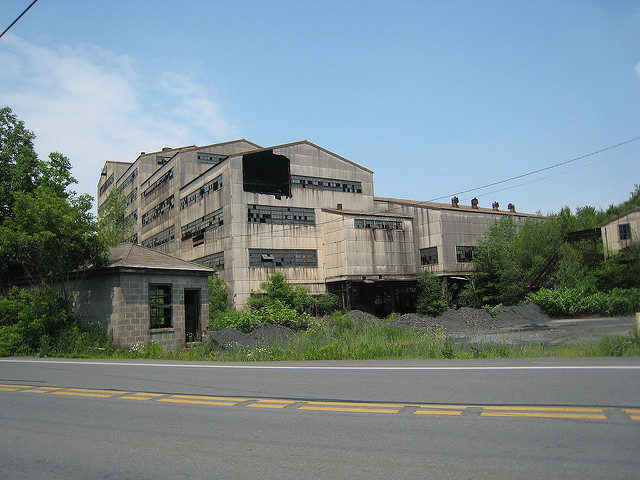As big as a city block is often the comparison used to describe the size of St. Nicholas Breaker. A giant among breakers, it was capable of handling almost 13,000 tons of coal on a daily basis. “When coal was king, its castle was the breaker,” writes The Morning Call in their online article about this place. And a stronghold it was, for almost 8,000 cubic meters of concrete and an additional 3,000 cubic meters of wire was used in order to construct this mammoth piece of Pennsylvania’s coal industry.

Truth be told, this place was so massive that around 2,500 square meters of rubber belting, 30+ kilometers of pipes, some 2.5 kilometers of conveyors belts, and around 40 kilometers of conduits were needed in order for this breaker to function properly.

It all began on March 11th, 1931, the first day of operation for this breaker; it was built some four years after the old one was demolished in 1928 – initially opened in 1861. That was the beginning after which followed billions of tons of coal, all neatly crushed and sized.
The idea of a breaker, however, begins in the 1840s; an invention that forever changed how coal was processed, for grinding the coal down to certain size allowed this natural product to be marketable, thus ensuring a prosperous economy and, by extension, a better life; back then, the economy in Europe was so fragile that many people were forced to leave.

Looking for a better life, many of the immigrants ended up working as part of the American coal industry. St Nicholas Breaker itself employed around 300 people. But this industry has its dark side. Even though many of them were happy to have a job at all, the mining industry itself, in general, is responsible for the death of thousands of people.

There were no safety regulations back then and age was never a barrier to work; boys no more than 8 years old worked in the breaker, picking up coal impurities dropped from the conveyor – much of it was razor-sharp shale – using nothing but their hands. And they worked intensely for no more than a few dimes per day.

Things changed slightly once the new St Nicholas Breaker was opened, though the work was still difficult and tedious. There was always the risk of hearing damage. In order for the breaker to grind down the coal to a desirable size, the coal went through series of conveyor belts and machines that crushed it and in the process produced an enormous sound that people described as a thunderclap. But despite everything, the new breaker was an enormous improvement and in a way that advanced the anthracite industry itself.

An industrial photographer of the day named Margaret Bourke-White paid this coal area a visit during the 1930s and was stunned by the speed with which the coal was processed. She further added the words “huge symmetrical monster” to describe the sheer size of the engine that kept the whole breaker alive.

But despite its size and the synonyms of a “monster” given and the promises of a brighter future, this breaker sadly met its end in 1965. It was the new and more modern competition that brought this behemoth to its knees; the new breakers required far fewer people to operate, thus reducing the overall costs. Outpaced by such modern inventions, the breaker was left abandoned and vacant, alone in the dirt and dust it once so furiously produced.

At the turn of the new millennium, a number of proposals were put forward in an attempt to convert this industrial relic to a historical site, but millions of dollars were needed to do so. For another 10 years, the breaker was left abandoned. In 2013, Reading Anthracite Company became its new owner and went on to tear down part of the breaker. Starting from 2017, the breaker is slowly dismantled one piece at a time and erased, though the stories of this industrial monster continue to linger on.
